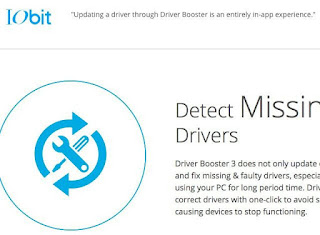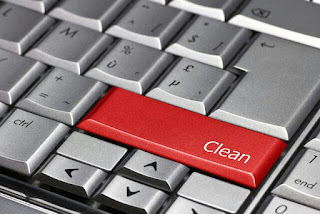Windows operating system having a great features, but like any operating system, Microsoft brings share of issues with every new version.
Windows upgrades are tricky business. It’s tough to predict how your PC will behave after it has gone through one. We can’t guarantee that these upgrades will change your Windows experience for the better, but we can help you make the best of them.
TheWindows 10 November update— aka Threshold 2 (TH2) or Version 1115 — got here in early November 2015. Contrary to popular belief, Microsoft has not pulled it, but had to fix settings changes and mean while has been rolling it out slowly.
With Version 1155 as the backdrop, let’s take a look at some common issues that surface for many users with every Windows upgrade. We’ll also discuss a few fixes available for them.
Note:An upgrade is different from an update. An update modifies existing features and files in a program. An upgrade adds new features and replaces existing system files with new ones. It usually makes significant changes to your PC.
Microsoft is referring to the November release as an update. Butit’s actually anupgrade that replaces your Windows 10 installation with a newer version, specificallyVersion 1511, orBuild 10586.
As a general rule,it’s best to keep all peripherals disconnected during the upgrade. Once the upgrade is complete you can reconnect them and find appropriate drivers for them. You can also use Windows Update to find the latest device driversbeforeyou upgrade.Some
Windows upgrades are tricky business. It’s tough to predict how your PC will behave after it has gone through one. We can’t guarantee that these upgrades will change your Windows experience for the better, but we can help you make the best of them.
TheWindows 10 November update— aka Threshold 2 (TH2) or Version 1115 — got here in early November 2015. Contrary to popular belief, Microsoft has not pulled it, but had to fix settings changes and mean while has been rolling it out slowly.
With Version 1155 as the backdrop, let’s take a look at some common issues that surface for many users with every Windows upgrade. We’ll also discuss a few fixes available for them.
Windows 10 upgrade th2 1511.10582 woes include deleted apps, system hangs, a disaster.@Microsoft https://t.co/g1bSe7E4I6 via @infoworld
— Nabil H (@inabster)November 15, 2015
Note:An upgrade is different from an update. An update modifies existing features and files in a program. An upgrade adds new features and replaces existing system files with new ones. It usually makes significant changes to your PC.
Microsoft is referring to the November release as an update. Butit’s actually anupgrade that replaces your Windows 10 installation with a newer version, specificallyVersion 1511, orBuild 10586.
The Installer Hangs
- The Windows installer can appear to get stuck at various points. Usually it’s just taking time to copy files or download them over a slow network. If you leave it alone and check back later, the installer would have proceeded to the next step.
- Even if the installer is stuck for hours, it pays to be patient and let the upgrade continue overnight. Otherwise, you’ll have to start over and that just means more waiting time.
- If the installer hasn’t responded even after letting the upgrade continue overnight, it isstuck and you need to take action to nudge it along.
- For example, in the case of the November update, several users have reporteda couple of common points at which the installer stops responding:
- 25%– The solution is to unplug any DVD or Blu-ray drive connected to the system and restart the upgrade.
- 44%– Removing the SD card before installation solves this problem. You can reinsert it after you have completed the upgrade. If you’re using the SD Card for the upgrade,
- Switch to a bootable USB created using the Windows Media Creation Tool.
As a general rule,it’s best to keep all peripherals disconnected during the upgrade. Once the upgrade is complete you can reconnect them and find appropriate drivers for them. You can also use Windows Update to find the latest device driversbeforeyou upgrade.Some
Features/Customizations Have Vanished
Windows 10 users who went ahead with the November update have reported thatMicrosoft has managed to sneak in yet another nasty surprise. During the upgrade, it uninstalls various programs without so much as a warning. What’s more, it even replaces your favorite programs with Microsoft tools as the system defaults.Sure, you can fix these two problems, but you shouldn’t have to, and Microsoft belatedly agrees:Recently we learned of an issue that could have impacted an extremely small number of people who had already installed Windows 10 and applied the November update (Version 1511). When the November update was installed, a few settings preferences may have inadvertently not been retained for advertising ID, Background apps, SmartScreen Filter, and Sync with devices. Thisissue has been fixed in the update that accompanies KB3120677.This is not the first time Microsoft has let users down ortampered with an excellent feature. All we can say here is that you’re dealing with Microsoft. Act accordingly. Expect them to use underhanded tactics and/or leave at least a few things messed up. Be sure torecheck your privacy settings after you upgrade.
~via Microsoft Support
The System Is Unstable
Are you experiencing post-upgrade glitches like Wi-Fi failure,system crashes, or a malfunctioning printer? In such cases,the culprit is almost always an incompatible driver.
Ensure that the hardware that isn’t working hasup-to-date drivers. You can download the latest ones from the vendor website. If the drivers are already up to date, try uninstalling andreinstalling them.
If the device malfunction persists, here’s what you can do. Run a Belarc Advisor testto get the make and model number of that piece of hardware. Use that information to search for solutions on the web .Want to make the process of updating drivers stress free? Install an all-in-one driver updater like IOBit Driver Booster, Driver easy etc
Downloads
System Performance Is Pathetic
If you’re having problems with poor PC performance even beforethe upgrade, the post-upgrade scenario won’t be any more promising. That’s why you should focus ongiving Windows a performance boost before upgrading. For starters,recover disk space and defragment your hard drive.
While you’re at it,look for and remove malwarefrom your computer. This won’t necessarily improve your system’s performance, because malware slowing down your computer is acommon myth. But you should still aim for a clean, safe PC to keep your data protected.
Note:Skip the defragmentation bit if your PC has an SSD.
Once your computer is in better shape than before, you can opt for an upgrade, after backing up your data of course.Go for a clean install if you suspect continued malware infections.
Performance issues can crop up after the upgrade regardless of precautionary measures. For example, users have reported issues like 100% CPU usage, slow boot processes, and choppy videos post the November update. In such cases, you might haveto adopt a trial-and-error method to fix the problem.
Begin with this classic piece of technical advice:reboot your computer. The number of issues that this step can fix will surprise you.
If you haven’t updated the audio and video drivers, do so now. Inmanycases, this simple tweak can bring a laggy system back to normal.
Your upgrade experience can vary based on your PC’s hardware and the Windows version you’re upgrading to/from.The issues you experience on the new installation might be different from the ones listed here.
The good news is that with Windows being a popular OS, you’ll be able to find a fix (or at least an explanation) for almost any problem that you face post an upgrade.




